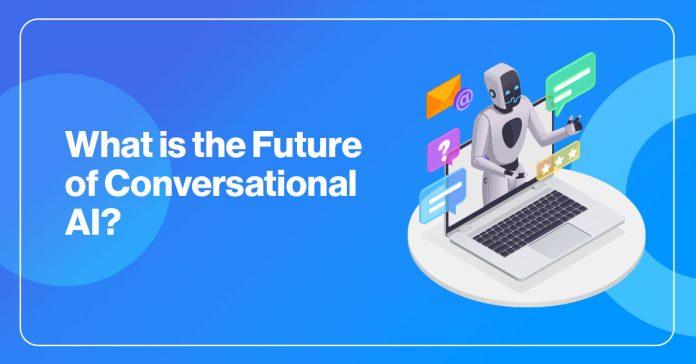In the fast-evolving landscape of artificial intelligence (AI), conversational AI technologies have emerged as a transformative force. As we navigate the future, understanding the evolution and impact of these technologies becomes crucial. This article delves into the historical journey, key components, industry applications, challenges, and future trends of conversational AI.
Table of Contents
The Genesis of Conversational AI
Conversational AI has roots in the early developments of natural language processing (NLP) and machine learning. Early systems relied on rule-based approaches, but the real breakthrough came with a shift toward data-driven models. Machine learning algorithms began to analyze vast datasets, enabling systems to understand and respond to human language more nuancedly.
Key Components of Conversational AI
Natural Language Processing (NLP)
NLP plays a pivotal role in conversational AI by enabling machines to comprehend and respond to human language. NLP algorithms have evolved from sentiment analysis to language understanding to provide more accurate and context-aware interactions.
Speech Recognition Technologies
The rise of voice-based interactions owes much to advancements in speech recognition technologies. Virtual assistants and other conversational AI systems can now understand and respond to spoken words, bringing a new dimension to user experiences.
Machine Learning for Context-Aware Conversations
Machine learning algorithms have become adept at understanding context, allowing conversational AI systems to engage in more meaningful and personalized interactions. This adaptability enhances the user experience across various applications.
The Rise of Virtual Assistants and Chatbots
Virtual Assistants
Virtual assistants have evolved into personal AI companions, offering a range of services from setting reminders to answering complex queries. Integrating voice recognition and NLP has elevated virtual assistants into integral parts of our daily lives.
Chatbots in Customer Service
Businesses are leveraging chatbots to enhance customer service. These AI-powered bots provide instant responses, streamline interactions, and contribute to improved customer satisfaction. Real-time case studies demonstrate their effectiveness in handling routine queries and freeing up human agents for more complex tasks.
Conversational AI in Business
The application of conversational AI spans across industries, transforming how businesses interact with customers and optimize internal processes.
Enhanced Customer Interactions and Experiences
Conversational AI has redefined customer interactions, providing personalized experiences and improving overall satisfaction. In sectors like e-commerce, customers can receive instant assistance, making their journey seamless and enjoyable.
Boosting Productivity and Efficiency
Internally, businesses are leveraging conversational AI to boost productivity. These technologies contribute to operational efficiency and cost savings, from automating routine tasks to facilitating internal communication.
Challenges and Ethical Considerations
While conversational AI holds great promise, challenges persist.
Current Limitations and Challenges
Issues such as understanding complex language nuances, handling ambiguous queries, and ensuring data privacy remain challenges. Ongoing research aims to address these limitations and enhance the capabilities of conversational AI.
Ethical Considerations
The development and deployment of conversational AI also raise ethical considerations. Ensuring unbiased algorithms, transparent decision-making processes, and respecting user privacy are paramount. Industry efforts are underway to establish guidelines for responsible AI use.
Future Trends in Conversational AI
As we look ahead, several trends are shaping the future of conversational AI.
Voice-First Interfaces
The rise of voice-first interfaces is changing how users interact with technology. Conversational AI increasingly focuses on providing seamless voice interactions, reducing reliance on traditional text-based input.
Integration with Emerging Technologies
Conversational AI integrates with other emerging technologies like augmented reality (AR) and virtual reality (VR). This convergence opens up new possibilities for immersive and engaging user experiences.
Industry Perspectives
Industry experts emphasize the profound impact and potential of conversational AI. Sundar Pichai, the CEO of Alphabet Inc., Google’s parent company, is one notable industry expert who has emphasized the profound impact and potential of conversational AI. Pichai has been vocal about the transformative power of AI and how it is reshaping the future of technology and communication.
In various interviews and public statements, Pichai has highlighted the significance of natural language processing and machine learning in advancing conversational AI. He often emphasizes how AI technologies, particularly those related to language understanding and communication, have the potential to make technology more accessible, intuitive, and responsive to human needs.
Pichai has discussed the role of conversational AI in enhancing user experiences, making devices more user-friendly, and revolutionizing how people interact with technology. He envisions a future where conversations with AI systems are seamless, natural, and capable of understanding complex nuances, ultimately making technology an even more integral part of our daily lives.
By acknowledging the potential of conversational AI and advocating for its responsible development, Sundar Pichai exemplifies an industry leader who recognizes the transformative impact of these technologies on the way we communicate and engage with digital systems.
Conclusion
Conversational AI is a beacon of innovation as we navigate the future, reshaping how we communicate, do business, and experience the digital world. Understanding its evolution, applications, challenges, and future trends is pivotal for businesses and individuals alike. The journey of conversational AI continues to unfold, promising a future where human-machine interactions are more seamless, personalized, and impactful than ever before.








